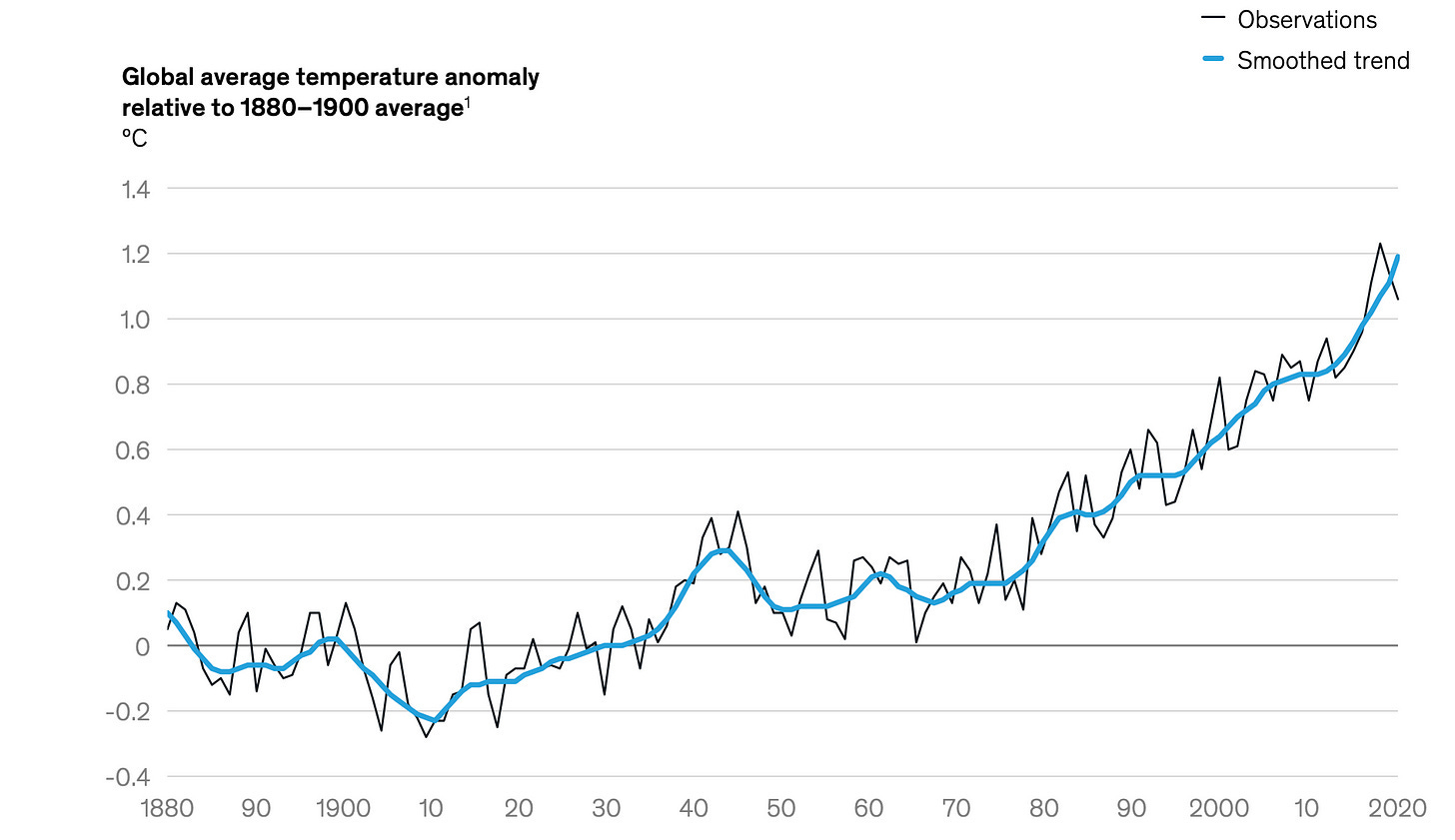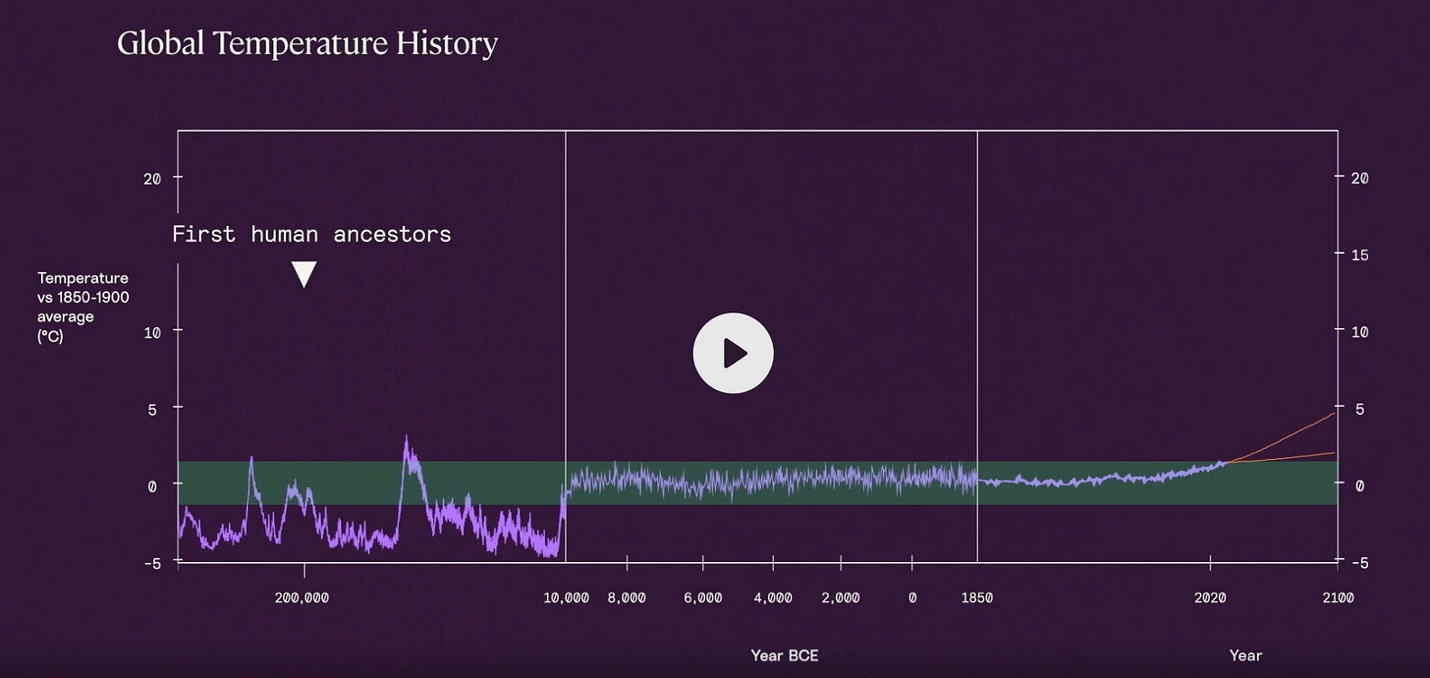“The Prince of Darkness is a gentleman.”
King Lear, Shakespeare.
“The majority of scientists have been telling us for years that the long-term warming trend greatly increases the odds that any given year will produce a much larger number of 100-degree days,”
Al Gore, 1992
It doesn’t take a sophisticated degree to see the weather is more erratic. Floods killed thousands in Libya last week, and hundreds of people died from June heat in India, following similarly fatal droughts in Russia, Australia, and elsewhere. Burning Man devolved into a mud fest when dry earth could not absorb unexpectedly heavy rain. Floods and storms are nothing new, but their recent intensity and volatility are.
Source: McKinsey
How should this change our thinking about saving and investing? I don’t mean from the perspective of “ESG” or Environmental, Social, and Governance perspective. I mean investing so that my assets don’t get crushed by storms and drought.
When I buy a stock or a bond, I’m always worried I can lose money, but I have not so far put my investments through a rigorous “climate filter.” Of course, I intuitively know not to buy seaside properties in Florida and the house I live in is intentionally several miles away from the coast. But the question is deeper than that.
To sort through this, one needs a reliable source of information. I found one I am excited to share with you, Spencer Glendon, the founder of Probable Futures, former Director of Research at Wellington Asset Management, and a Ph.D. from Harvard. I recorded our full conversation here (click on the word “here”) and my producer Dave Manahan edited it.
Spencer maintains an excellent website about climate change that I encourage you to read. Below is a chart of his that sums it all up for me. Think about the climate temperature the way you would your own temperature; 98.7 is normal, if your temperature climbs to 103 you feel terrible and 106 is death. Said differently, as humans, we can not tolerate even modest shifts in our internal temperature.
The chart shows what has happened to the earth’s temperature over the past 200,000 years. Essentially, it was colder, substantially, than it is now but as humans settled the temperature warmed. Now, roughly 200 years after the Industrial Revolution, and as the population spikes from 2 billion to 8 billion, the temperature is soaring out of that 12,000-year-old range. Just like a human being has a fever, so too does the planet with pretty much all the consequences Al Gore warned about 30 years ago.
Investment Implications






